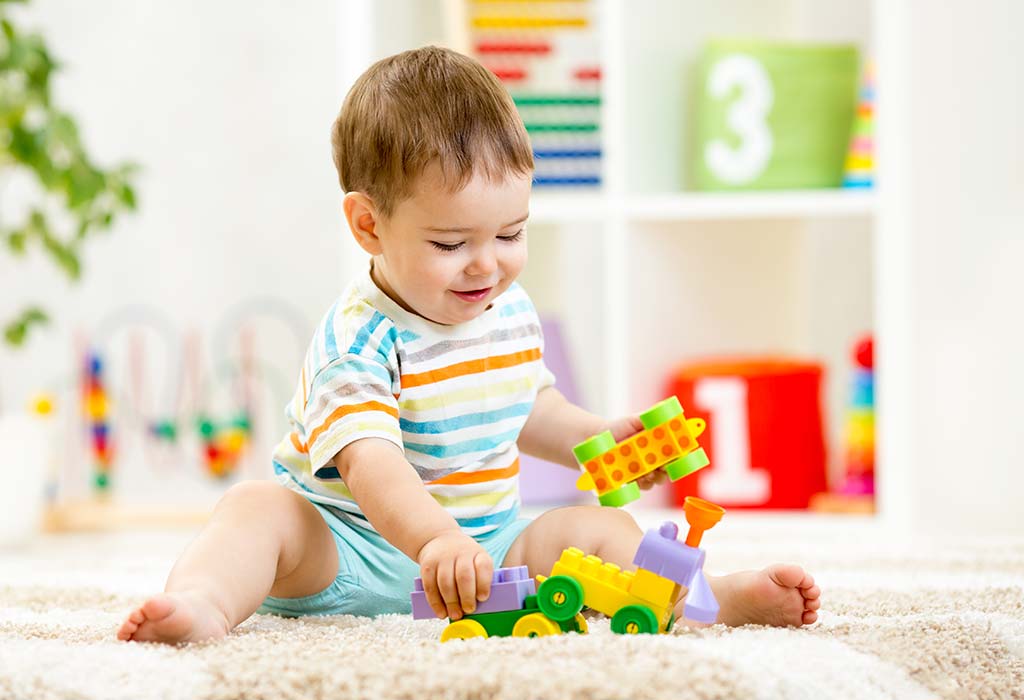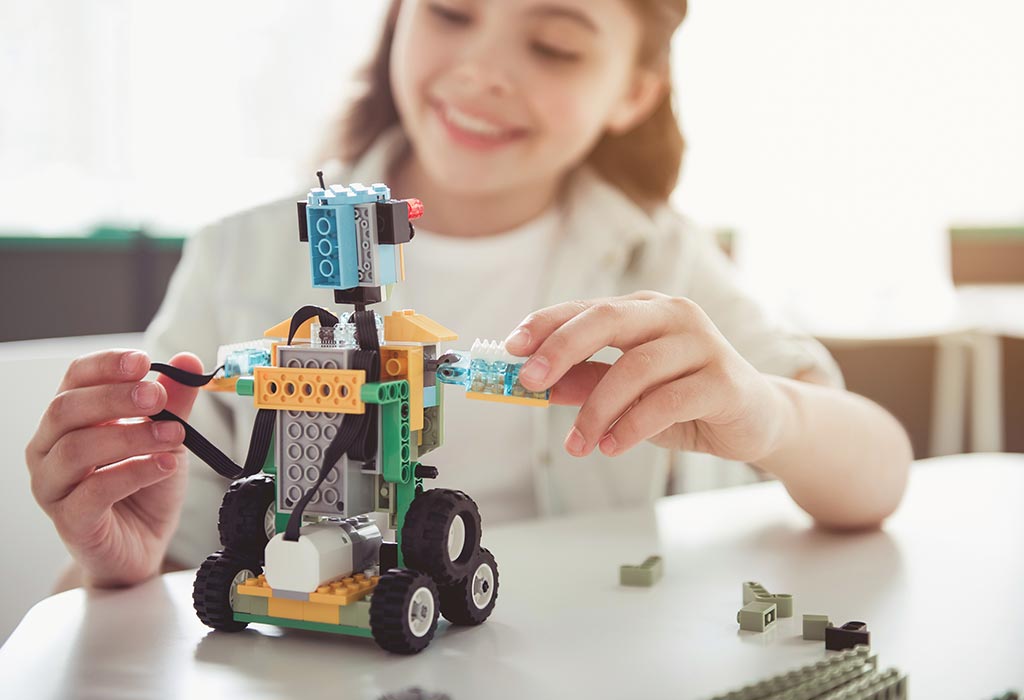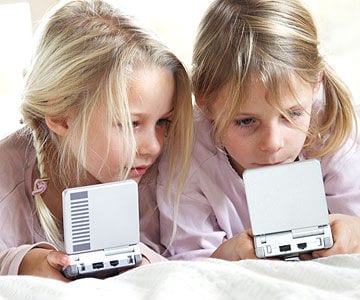Even if you give your child a car full of toys to play with every day, eventually, they'll get bored. After a while, they'll stop playing with them and look for new projects. This is when the importance of rotating toys becomes clear.
Toy recycling helps children discover something new that the old toy didn't have, every time they play it. It enhances a child's intelligence by giving them a chance to experience something new each time. It keeps the child engaged for a longer period of time, as it increases their interest in the toy. This method enhances a child's intelligence as well as their creativity. You will be doing your child a world of good, and giving you a chance to sneak in some valuable free time. For those of you still wondering what toy recycling is all about? Read on to find out how it benefits your child.
What are the benefits of taking turns?
Toy rotation is a way to organize your children's toys into specific groups and give your children access to one or two groups of toys at a time. This has many benefits—it makes cleanup much easier, reduces clutter in your home, and allows children to appreciate and play with all the toys in the group you give them.
A rotating toy system for children is a great way to keep your child engaged by rotating sets of old toys on a daily basis. This system ensures that your child uses what they already have. Some of its benefits are listed below:
- Your child's creativity and intellectual abilities are enhanced when you find new ways to play with an old toy.
- Even though your child is playing with their old toys in this system, they are still busy and occupied. This ultimately leads to time wasted.
- Games that have a small collection of toys that can be played with every day, without interruption. This means less cleaning for the parent. The house will also look tidy, not like a toy store.
- Parents are spared from spending money on buying new toys every now and then, and children are spared from being spoiled for choice.
- By the time you're collecting today's toys, you'll have a better idea and accountability for which toys are playable and which need to be discarded.
- Too many toys to choose from not only spoils your child, but can also stress them out. Thinking about what to choose and what to leave can put your child under pressure. By rotating toys, your child has fewer toys to choose from, which relieves stress.
- Allowing your child to play with a specific toy once a week or every 10 days makes it more valuable. If your child is given the same toys to play with every day, they will lose interest in the toy and may refuse to play with it.
- This method makes your child's playroom more organized now that all the toys are neatly collected in boxes.
- It also makes it easier for you to keep track of all your toys while you clean them up. You don't have to go hunting for toy parts all over the house.
- It also teaches the child how to be independent and play alone. This gives the mother some time to herself or time to spend with the other child in the case of a second child.
- Rotating toys encourages a child to help mom clean the playroom and make it more organized. Because there are separate boxes for each set of toys, it's easier for the child to keep their toys in the correct box. This way, mom also gets some help in cleaning the play area, instilling a sense of responsibility in the child from an early age.
Simple steps to the game cycle
Having too many toys to choose from can be confusing and stressful for them. So, if you want your child's playtime to be fun, filled with new experiences, and learning, introduce a toy rotation system. Here's a step-by-step guide to help you with the toy rotation.
1. Watching
After you've gotten the idea of rotating toys and are putting it into practice, observe your child closely. Observe which toys he or she shows more or less interest in. Note the length of time each toy lasts.
2. Selection
Now that you've observed your child for a few days, choose toys that you think he might be interested in. You can also get rid of broken or irreparable toys. Getting rid of toys that your child isn't fond of or is too old to play with is a good way to declutter the space.
3. Insulation
After selecting the games, the toys should be separated into the following criteria:
- Cognitive Motor Development and Fine Motor - Puzzles
- Total Engine Development - Balls, Vehicles, Trains
- Social, Emotional, and Language Development – Dolls and Play Utensils
4. Organization
According to your child's requirements, you can organize the toys into different categories.
- Daily In this type of rotation, you should have seven sets of games, one for each day of the week.
- View Here, you need 4 sets of toys for each week of the month. Your child will get one set of toys to play with. Since you know your child best, it's up to you alone to decide how many toys should go in each set.
- Monthly This rotation requires you to rotate the toys only once a month. Three to six boxes of toys are sufficient. However, if you want to get a new set every month, you can get up to 3 sets.
- random In this type of rotation, you might have several boxes of toys. You might give out a new set of toys whenever you see your child getting bored with one set. This rotation system is helpful for children with short attention spans.
5. Naming
Label each box according to its category or function. This will make it easier for you to choose the boxes and give them to your child.
- Keep a notebook and use a separate page for each category of children's toys.
- Leave room for notes and note the games your children play and the toys they hardly touch.
- Having these notes will help you the next time you go shopping for toys. You'll know what types of toys your kids are currently using.
6. Arrangement
Organize each category into subcategories containing a set of games for each. For example:
- Puzzles and board games: These games aim to develop children's fine motor and cognitive skills.
- Balls, bobbles, and vehicles: These toys target the development of gross motor skills in your children.
- Building blocks, soft toys, and dolls: These are designed to develop fine motor skills as well as emotional and social skills in your children.
7. Put them in boxes
Place each category or subcategory of games in each box. Remember not to mix categories/subcategories.
- You have a collection of games for each category of games.
- Make 3 to 4 groups in each category so that your children are fully engaged in those games.
- Take help from family members like grandparents or aunts to organize this.
8. Store
Store toys for future use. However, remember to keep them in places where your child may not be able to reach them.
- Keep 2-3 boxes of toys hidden away.
- When your kids get bored with the current box, you can swap it for a new one.
9. Exhibition
Place toy boxes on the shelf or some extra toys on display and watch the little light.
- Show the games you give them access to.
- Mark which ones they play with and return unused items to storage.
10. Change
Depending on your child's needs and the way you have planned, rotate and change the toy set.
- Every 15 days to XNUMX month, swap toys with a different box that the children didn't have access to previously.
- Remember to put away the old toys before taking out the new ones.
Now that you know toy rotation and how it works, try this system at home. It may not work for you or your child at first; however, after a while, you'll see the benefits. Go ahead and give it a try.









